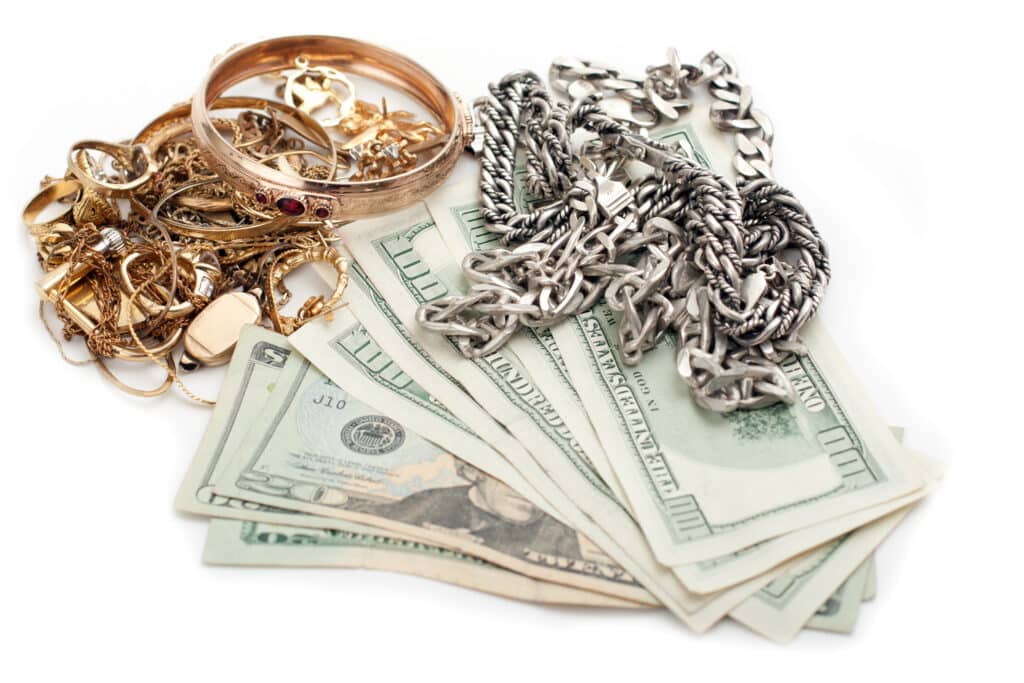Selling your gold and silver jewelry can be a useful way to turn items you no longer use or need into valuable cash. Whether it’s an old piece of jewelry that’s been collecting dust in your drawer or a family heirloom that you’re finally ready to part with, finding a reputable coin dealer can make all the difference in your selling experience. A fair and reputable dealer will not only offer you competitive prices for your jewelry based on the latest market values, but they will also provide a secure and transparent transaction process.
Selling Your Jewelry
Unlocking the value from personal accumulations of gold and silver is simple enough to do if you are armed with the facts and deal with a reputable gold/silver buyer.
What to Know
-
-
The “spot price” for gold (or silver) is the price per ounce of gold (or silver) on the commodities market. Like all commodities, spot prices vary wildly day to day, hour to hour, or even minute by minute. Accordingly, the prices buyers will pay fluctuate with gold and silver prices. Today’s quote is not valid tomorrow.
-
Gold jewelry comes in various karat weights… 10K, 14K, 18K and 22K. Pure gold is 24K but rarely found in jewelry. Karat weight refers to the amount of gold that particular item. Example, 10K is 10/24 gold or .4166% gold = 1 ounce of 10K equals .4166 ounces of pure gold
-
Due to impurities, refining costs, buyer fees, changing commodity prices, and risks of counterfeit gold jewelry, reputable buyers of gold jewelry will usually pay between 78%-88% of the spot price for gold jewelry depending on the volume and type of jewelry. Traveling hotel buyers and gold buying retail stores often pay only 50%-70% of spot price and sometimes even less.
-
Silver jewelry is normally “sterling silver” and has 92.5% purity. Similar to gold, reputable silver buyers usually pay between 78%-88% depending on spot price and volume.
-
Due to risks related to stolen merchandise, sellers need to provide two forms of identification and be thumb printed.
-
Per government regulation, 1099 tax forms (and homeland security anti-terrorism forms) must be issued for all sales in excess of $10,000.
-
Finding a Reputable Dealer
-
-
The dealer should be willing to assess your jewelry at no charge.
-
Check out online reviews or request references.
-
Get referrals from friends and family.
-
Opting to sell to a trusted coin dealer ensures that your precious metals are accurately appraised, giving you peace of mind and the best possible return on your investment. Grand Rapids Coins offers complimentary jewelry, coin, currency, and scrap metal appraisals Monday through Friday from 10 am to 3:30 pm at our retail gallery located at 2745 10 Mile Road in Rockford. This location is conveniently located immediately off exit 97 of Highway 131 on 10 Mile Road in front of Meijer. To set up an appointment, please call 616-884-5048 or fill out our convenient online form.

